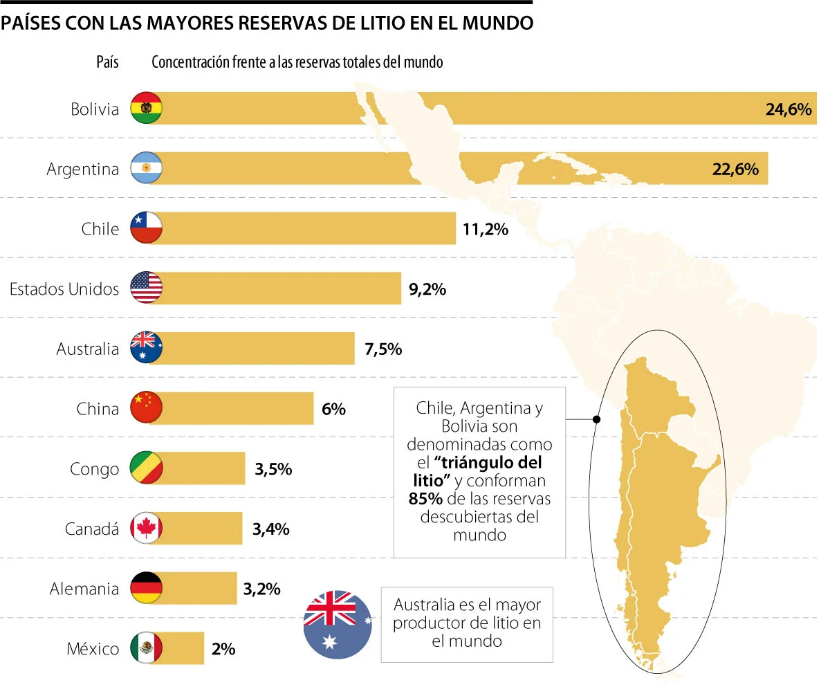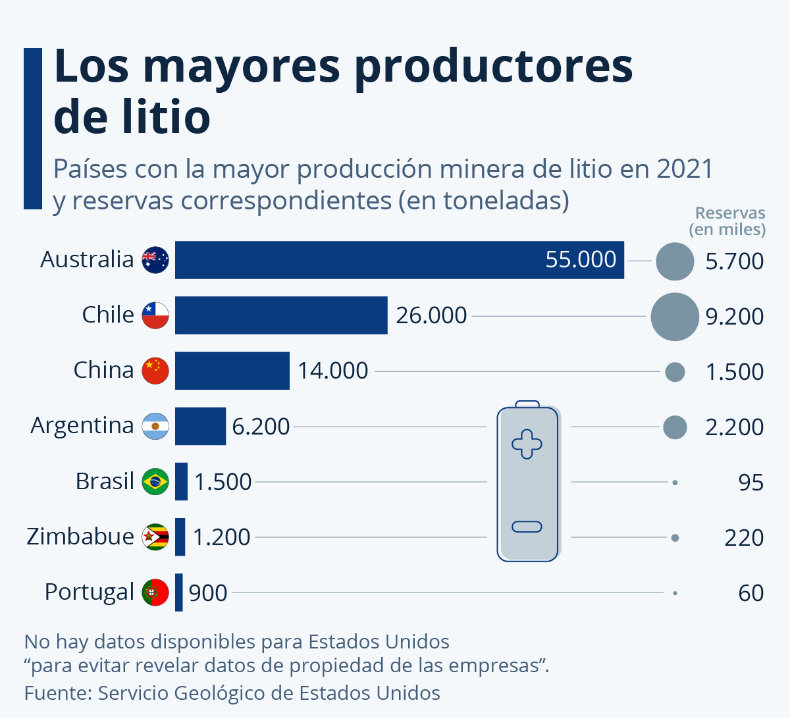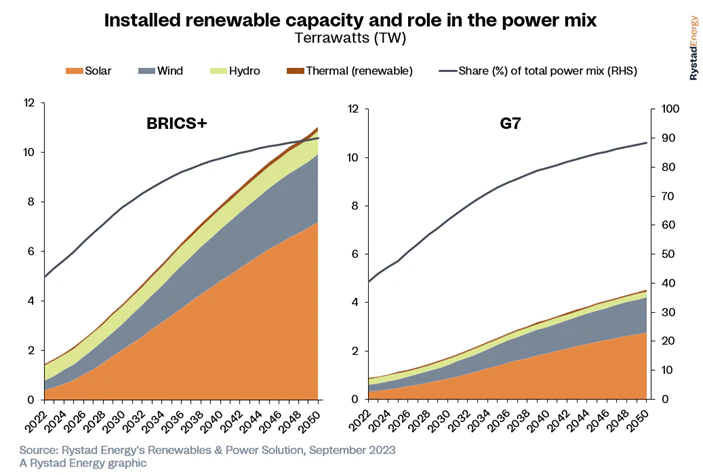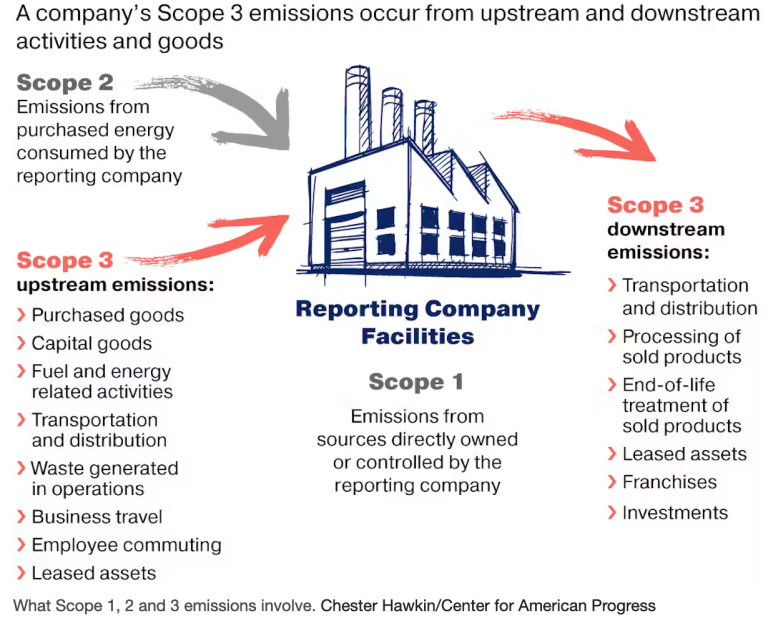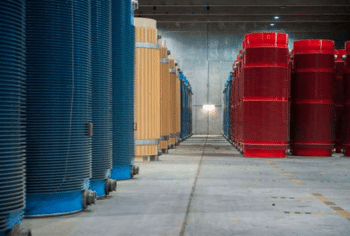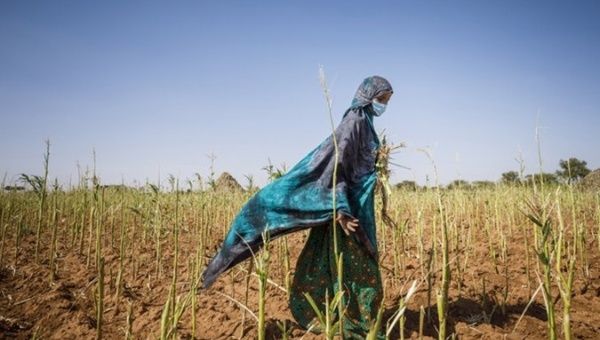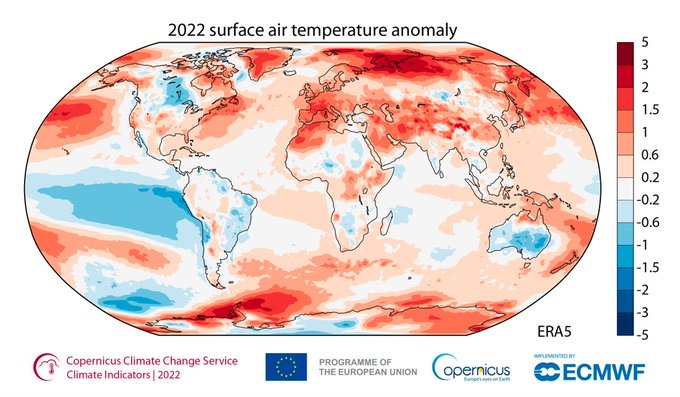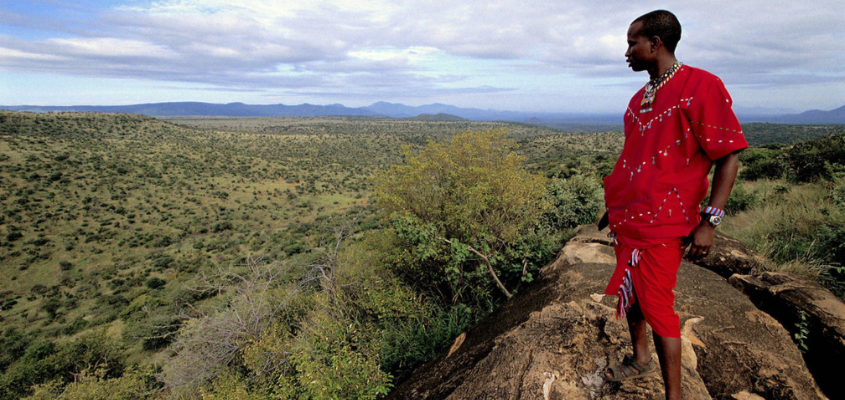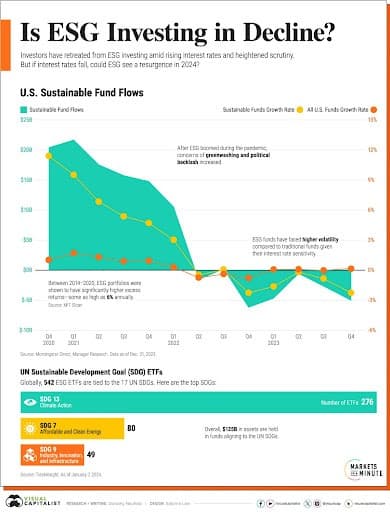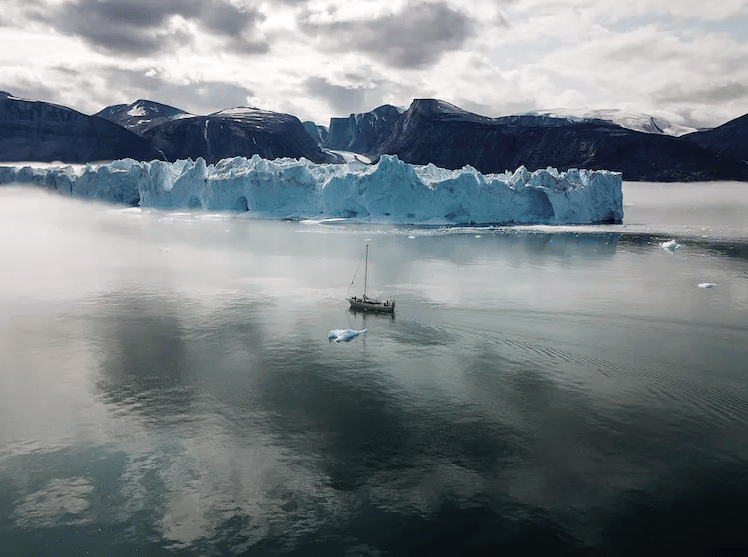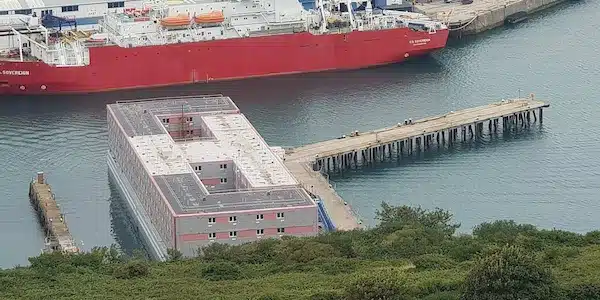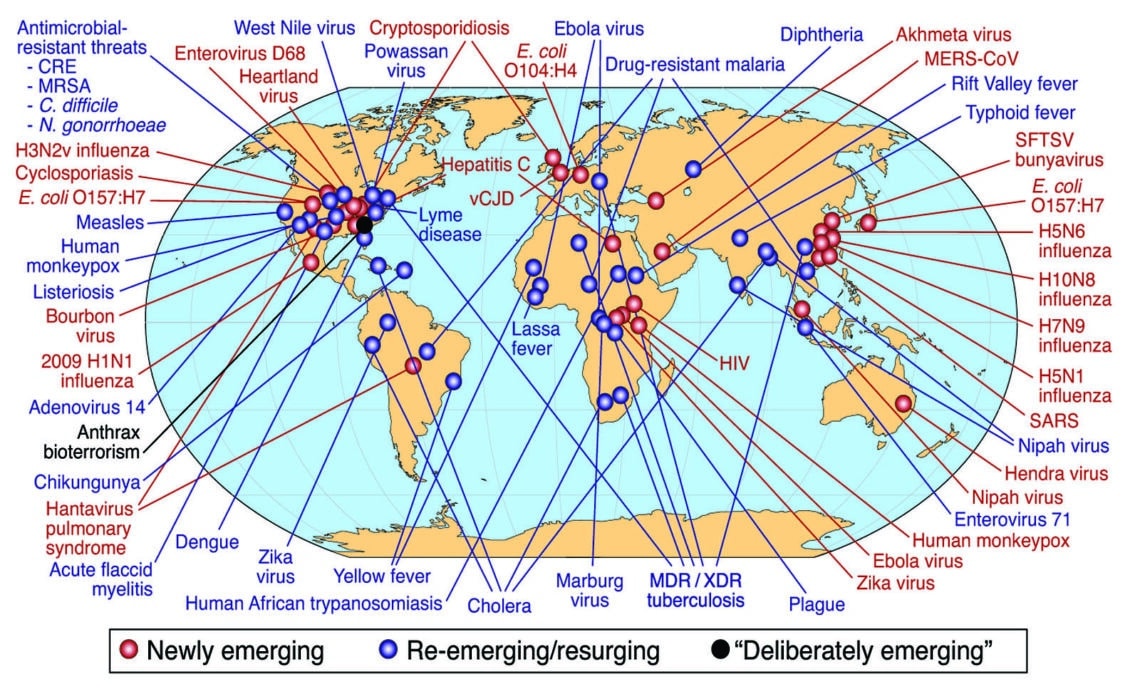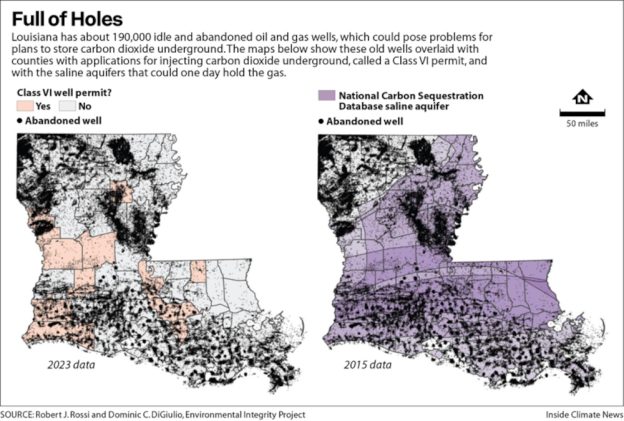In the final analysis, there aren’t hundreds of problems in the world – there is just one.
Proletarian TV
Wednesday 14 February 2024
This article is based on a recent webinar addressed by Ambassador Valdrack Jaentschke, who led the Nicaragua government delegation to the 2023 United Nations climate change conference in Dubai, more commonly known as Cop28.
During his presentation, the ambassador explained how Nicaragua is combating climate change, both at home through its renewable energy and other programmes, and in the international arena through cooperation and by by the power of its example in implementing policies that demonstrate a real concern for the earth (in contrast to imperialist greenwashing).
Ambassador Jaentschke began by recalling the Paris climate conference of 2015. While Nicaragua upheld the position that the capitalist economic system is at the root of our environmental problems at that meeting, the majority of participants and all the meeting’s outcomes simply reinforced the status quo.
The recent Cop28 conference, said the ambassador, was simply a continuation of that same old line. Whilst accepting the continued pollution problems created by the imperialist economic model, the western nations had the audacity to rub salt into the wound by blaming developing countries for the problems created by their own economic system!
The Paris agreement agreed targets that were aimed at setting a limit on the absolute rise in global temperatures. But Ambassador Jaentschke explained that technical conversations about points of degrees are moot for those who are suffering the real consequences today. The most important question in Nicaragua’s view is: who is principally being affected by temperature increases?
Unequal effects and an unbearable burden
Today, the people who are already feeling the brunt of climate change include the populations of small island development countries (SIDS), and islands in the Pacific and the Caribbean. A mere 1.5C increase in temperature in the lowlands of central America, one of the most vulnerable areas of the world, will result in these islands’ complete disappearance.
Ambassador Jaentschke spoke passionately about the reality that lies behind the politicians’ rhetoric about ‘limiting global warming to 1.5C’. Western audiences may be reassured by such empty promises, but the reality is that, as temperatures rise, life is literally disappearing from under the feet of many people across Asia, Africa, the Pacific and the Caribbean.
More than that, the affected nations, already facing huge obstacles to their development as a result of imperialist looting and domination – including economic sanctions, debt, war, corruption and poverty – are now also having to contend with the recurring devastation caused by climate change. This in turn necessitates recurring costs in infrastructure and resilience capacity rebuilding.
Nicaragua did not and does not cause climate change, said the ambassador. Data show that a few rich countries with the highest carbon emissions in the world are responsible for more than 83 percent of global emissions, while Nicaragua emits less than 0.05 percent of the global total. Yet Nicaragua’s economy suffers a yearly impact from climate change that is equivalent to 8 percent of its GDP – up to $4bn annually.
This is adversely affecting not only its infrastructure but also production, the environment, health, education and energy. Floods and changing patterns of rainfall and temperature are depleting crop production and yields, making farming unpredictable at best and impossible at worst.
Having to replenish the regular devastation of public goods is a huge burden for a poor country to bear. The ambassador pointed out that for a developing society trying desperately to lift its people out of poverty, the endless struggle to create vital infrastructure like roads, buildings, houses, schools and health centres, only to have them decimated by floods and hurricanes, doesn’t just impact the country’s finances but its psychology.
By undermining the country’s capacity for development, this cycle is affecting every aspect of social life.
Imperialists breaking their promises, refusing to pay what they owe
Climate reparations are a core demand of the Nicaraguan government. Ambassador Jaentschke explained that the capitalist rulers of the world always ensure reparations for damages to their own interests. He cited the example of Zimbabwean landowners, and we could add many more, one of the most notorious being the two centuries’ worth of payments made by the government to former slaveowners for the ‘losses’ they suffered when slavery was officially abolished in Britain!
This system of compensation only ever works one way, however, from the poor to the rich. No restitution is ever made to those who are adversely affected by the actions of western imperialism, whether they be the victims of slavery, of colonial genocides or of climate change.
Since it was the western capitalist-imperialist system of production that caused the climate problems besetting so many developing countries today, said the ambassador, it is the beneficiaries of that system who need to pay the bill humanity now faces. Those who set up these unequal and damaging dynamics, and who have profited so mightily from their global plunder and despoliation, have ultimate responsibility for funding the measures that are now urgently needed to reverse and mitigate the effects on the poor communities whose lives are being blighted and livelihoods destroyed.
The Paris agreement and subsequent Cop conferences agreed that the western imperialist countries would fund a mechanism to compensate poor countries, pledging to provide a replenishment fund of at least $100bn annually to help towards replacing what is being lost every year.
In reality, however, less than 10 percent of the promised funds have been received since 2015. Instead of paying as promised, western nations are doing everything possible to circumvent their responsibilities, both in terms of paying the promised reparations and in terms of addressing the ongoing impact of their activities on the global climate.
As one of the countries most seriously affected, Nicaragua is at the forefront of the campaign to have this global injustice recognised and addressed. The ambassador pointed out that the imperialist nations are not emitting any less than they were when they made their commitments in 2015; and that they are emitting four times the target that was then agreed upon. Meanwhile, the western concept of ‘carbon neutrality’ is a cynical bit of greenwashing that manipulates public understanding, creates business opportunities and achieves nothing.
Greenwashing v real green measures
Cop28 ended with an agreement that “signalled the beginning of the end” of the fossil fuels era but which was itself unequal, said Ambassador Jaentschke. The western nations have reached a stage of technological advancement that the developing nations have not; using climate excuses to forbid the development of other countries is entirely unacceptable.
Nicaragua itself is proactively seeking alternative sources of energy. On 27 November 2023, Latino Metrics highlighted the huge progress the country has made in the field of renewable energy. Not that we would know if from reading the western environmental columnists, but Nicaragua has surpassed Norway and Sweden to become a world leader in the production of clean energy, raising its production rate from 21 percent to 70 percent of energy consumed in the last two decades.
As a small, developing but revolutionary country, Nicaragua approaches the issue of climate from a perspective of social responsibility and with a real care for its people and their environment. The Sandinista government’s decisions and actions, whether in the field of health, education, development or climate change, are underpinned by the socialist principles of their revolution.
The capitalist system of production is at the core of the climate crisis. The pursuit of maximum profit is the reason humanity faces these problems – and the reason it is unable to address them in any meaningful way. Capitalist-imperialism is the motivator for wars, genocide, poverty, injustice, inequality, as well as for social and environmental degradation.
In the final analysis, there aren’t hundreds of problems in the world – there is just one. The perceptible and accelerating deterioration in the quality of our lives and of our environment is directly attributable to the outdated, parasitic, moribund system of capitalist production for profit, and will only be solved when that barrier to human progress has been removed.
https://thecommunists.org/2024/02/14/ne ... apitalism/
******

The climate crisis: Corporations are gambling with our lives
By Martin Hart-Landsberg (Posted Feb 14, 2024)
Originally published: Reports from the Economic Front on February 7, 2024 (more by Reports from the Economic Front)
The World Meteorological Organization has declared 2023 “the warmest year on record, by a huge margin.” Annual global carbon emissions also hit a new high, surpassing the previous record set in 2022. We have to act now before critical thresholds or tipping points are crossed, and that means rapidly phasing out the use of fossil fuels. And yet, the U.S. government continues to green light the exploration, production, and use of fossil fuels, even while simultaneously voicing support for an international agreement to phase out fossil fuels at the recently completed COP 28 in Dubai. What gives? And what can we do about it?
The green light
The U.S. is the largest producer of oil and gas in the world. It is also the world’s largest gas exporter, with exports doubling over the last four years. The 2022 Inflation Reduction Act (IRA), considered the most important environmental legislation ever passed by the U.S. Congress, includes a number of significant climate and clean energy provisions but tellingly none that require phasing out fossil fuel exploration and use. In fact, the opposite is closer to the truth.
To win passage of the IRA, Biden agreed to guarantee the completion of the 300 mile natural gas Mountain Valley Pipeline, a project that local communities had opposed for years for multiple reasons, including protection of the environment and climate justice. The IRA itself gives the green light to three major federal oil and gas offshore lease sales that the Biden administration had previously canceled and reinstated a fourth that had been denied by a federal court order. It also requires the government to offer millions of acres of oil and gas leases on public lands and federal waters before it can auction any acreage for wind and solar farms. As an AP News article notes,
The measure’s importance was underscored by Chevron executives during a recent earnings call, where they predicted continued growth in the Gulf and tied that directly to being able ‘to lease and acquire additional acreage.’
So, how does the U.S. government reconcile its domestic policies with its COP 28 position? The answer is that it is talking about the eventual phasing out of “unabated fossil fuels.” As a Carbon Brief report explains:
“Unabated” refers to the burning of fossil fuels where resulting carbon dioxide or other greenhouse gas emissions are released directly into the atmosphere, adding to global warming.
Conversely, “abated” refers to the burning of coal, oil and gas combined with the capture and permanent storage of some proportion of the resulting greenhouse gases. This proportion is a key detail as there is no agreed definition of what “abated” means.
It is easy to see why the government appears willing, further down the road, to support this position: the development of a somewhat workable process of capturing and storing carbon would allow the continued use of fossil fuels and the maintenance of the existing economic system, thus avoiding any clash with the business community.
There are two main forms of carbon capture technology. Carbon capture and Storage (CCS) involves capturing emissions from the source generating them. The captured carbon is then either moved directly to underground storage or used first for other industrial purposes and then stored. Direct air capture (DAC) involves directly removing carbon emissions from the atmosphere.
While many government and business leaders celebrate CCS and DAC as new, cutting-edge technologies that hold the key to a carbon free future, CCS technology is far from new. It was first developed and used in the 1970s to boost oil production. Carbon was captured as a biproduct of the operation of gas processing plants and then pumped into old oil wells to force the remaining oil to the surface, a process known as enhanced oil recovery (EOR). And this remains its primary use, with approximately 80 percent of the carbon captured globally used for EOR.
Perhaps not surprisingly, only a small percentage of the carbon dioxide emitted from gas processing plants is actually captured. Moreover, little to no effort has been made to keep the captured carbon pumped into the ground from escaping back into the atmosphere. Thus, to this point, the technology has been far from the hoped for silver bullet. In fact, its main purpose has been to extend the life of existing fossil fuel projects
Of course, CCS proponents hope for a future where carbon capture devices would effectively capture the great majority of emissions from fossil fuel-dependent factories and power plants, with the captured carbon then safely stored underground. But current efforts are far from encouraging. The Abu Dhabi National Oil Company’s flagship CCS project is a case in point. As Oil Change International reports, the project,
which is supposed to capture emissions from a steel plant, is only designed to capture around 17 percent of that plant’s maximum CO2 pollution. Furthermore, there is no publicly available information about how much CO2 it has actually captured. What the CCS project does capture is used to increase oil production, leading to more emissions when burned.
At present there are only 42 operational commercial projects using CCS in the world. Their total storage capacity amounts to only 49 million metric tons or 0.13 percent of the world’s annual carbon dioxide emissions. Moreover, only 12 of these projects are designed to permanently store carbon dioxide without first using it for EOR. It remains to be seen if any will prove profitable; several CCS projects have already been temporarily shut down for financial reasons.
There are also financial and environmental concerns about developing permanent storage sites and safely moving the captured carbon dioxide there. For example, Reuters reports that in October 2023 “a $3 billion CCS pipeline project . . . in the U.S. Midwest—meant to move carbon from heartland ethanol plants to good storage sites—was canceled amid concerns from residents about potential leaks and construction damage.” No wonder the International Energy Agency warns against “excessive expectations and reliance” on carbon capture as a solution to our climate crisis.
Direct air capture remains a far more experimental and expensive process. At present only 27 DAC plants have been commissioned world-wide and their climate contribution is insignificant, currently capturing only 10,000 metric tons of carbon emissions each year. The Abu Dhabi National Oil Company and Occidental Petroleum are jointly working to build what would be the largest DAC facility in the U.S. However, its purpose has little to do with fighting global warming. Instead, the captured carbon is to be used for enhanced oil recovery. As Occidental Petroleum’s chief executive noted, while speaking at an industry conference, this technology “gives our industry a license to continue to operate for the 60, 70, 80 years that I think it’s going to be very much needed.”
What’s going on?
Capitalism is based on the privileging of property rights over most other rights, in particular the right of corporations and other businesses to employ their assets as they see fit in pursuit of profits. Because efforts to limit those rights has the potential to trigger a disrupting business strike, government policy-makers have generally viewed the development of markets, and when needed subsidies and taxes to influence their outcome, as the best way to encourage a climate-favorable economic transition.
That is a big reason why Biden included open-ended tax credits to encourage business investment in CCS projects in the IRA, with estimates of their potential cost ranging from $32 billion to $100 billion. Separately, the government is offering billions in grants to help establish two DAC hubs in Texas and Louisiana. Tragically, the pursuit of such efforts is likely to set us back, since the years spent attempting to develop an effective technology will be years of unchecked fossil fuel use.
But what about the business community? What explains its resistance to meaningful action to reduce emissions and combat global warming? At one point, it might have been possible to believe that the business community, especially the fossil fuel industry, just didn’t believe in global warming and therefore saw no reason to accept limitations on its freedom to pursue private profits. However, we now know, thanks to a series of investigative reports, that leading fossil fuel companies have long been aware of the problem of global warming and concerned about their role in driving it.
An investigation by Inside Climate News into what Exxon knew and when, revealed that the company (now ExxonMobil) was taking climate change seriously as far back as 1977. That was the year Exxon’s senior scientist James Black told Exxon’s management committee that “In the first place, there is general scientific agreement that the most likely manner in which mankind is influencing the global climate is through carbon dioxide release from the burning of fossil fuels.” And a year later he warned the committee that that “present thinking holds that man has a time window of five to 10 years before the need for hard decisions regarding changes in energy strategies might become critical.”
As Scientific American explains in its summary of the Inside Climate News investigation:
Exxon didn’t just understand the science, the company actively engaged with it. In the 1970s and 1980s it employed top scientists to look into the issue and launched its own ambitious research program that empirically sampled carbon dioxide and built rigorous climate models. Exxon even spent more than $1 million on a tanker project that would tackle how much CO2 is absorbed by the oceans. It was one of the biggest scientific questions of the time, meaning that Exxon was truly conducting unprecedented research.
The Union of Concerned Scientists conducted their own investigation which resulted in the publication of a set of seven Climate Deception Dossiers. The collection, drawing on a variety of “internal company and trade association documents that have either been leaked to the public, come to light through lawsuits, or been disclosed through Freedom of Information (FOIA) requests” makes clear that Exxon was not an outlier. Other prominent fossil fuel producers—including Chevron, ConocoPhilips, BP, and Shell—shared its concerns. The collection also highlights the ways in which these companies actively financed public campaigns and legislative efforts designed to discredit the work of climate scientists and block climate action.
Even if it took business leaders in other sectors of the economy longer to understand the causes and consequences of global warming, it seems safe to dismiss climate ignorance as a major reason for corporate resistance to meaningful climate action. A far more likely explanation is that they don’t see it as a serious threat to their own personal lives or business pursuits. And for good reason: to this point, it is the people in the global South, especially in Africa and Asia, that are suffering the most from the worsening climate crisis.
For example, Carbon Brief found that “in 2023, every part of the [African] continent was affected by extreme weather disasters, ranging from catastrophic flooding in Libya to intense heat in Malawi.” South Sudan is one of the many countries experiencing both:
An unprecedented flooding crisis has swallowed large swathes of the country while other parts are grappling with devastating drought. For some, the floods have resulted in extreme food scarcity and forced some families to depend on wild foods like water lilies to cope. 64 percent of the country’s population (7.7 million people out of 12 million total) are experiencing severe hunger.
A similar story can be told about many countries in Asia. Pakistan, for example, experienced widespread flooding in 2023, one year after an even more massive storm left one-third of the country underwater. The cause: heavier than usual monsoon rains and melting glaciers that followed a severe heat wave. Farmers in India similarly suffered major crop loss in 2023 because of the combination of extreme weather conditions, including destructive heatwaves.
Of course, Americans have not been spared. But, as the U.S. Environmental Protection Agency points out,
the most severe harms from climate change [in the US] fall disproportionately upon underserved communities who are least able to prepare for, and recover from, heat waves, poor air quality, flooding, and other impacts.
A last factor, and no doubt an important one: business leaders have every reason to believe that if and when the costs of global warming become a significant political problem, the government will open the public purse still wider to compensate them for any changes that might prove necessary in their business practices. In the meantime, “steady as you go” ensures big profits.
In sum, it appears that our business leaders are more than willing to gamble with our lives. Carbon dioxide remains in the atmosphere for a long time, between 300 to 1000 years. And it can take years or even decades for us to experience the heat trapping consequences from higher emission levels. This means that we do not have the luxury of waiting until sometime in the future to take meaningful climate action. As the New York Times explains,
Every 10th of a degree of global warming represents extra thermodynamic fuel that intensifies heat waves and storms, adds to rising seas and hastens the melting of glaciers and ice sheets.
What to do?
A starting point is to work in our communities to help people better understand the ways in which the logic of capitalism is both driving the climate crisis and blocking meaningful responses to it. We also need to continue our organizing work, for strong unions; expanded and affordable public transportation; universal health care; the retrofitting of existing homes, offices, and factories; safe and affordable public housing; and, of course, the rapid phase out of fossil fuel use. However, for reasons highlighted above, there are limits to what we can hope to achieve as long as our political-economy remains as is. Thus, we also have to find ways to strengthen connections between our many efforts at social change to help spur a larger popular movement, one with the capacity and vision to fight for an economy that is able to provide a sustainable, egalitarian, and humane way of life for us and for others.
The creation of such a new economy will involve, by necessity, a lot of moving parts that have to be managed and coordinated. Some goods and services, and in some cases entire industries, especially those dependent on fossil fuels, will have to be dramatically downsized. We will have to develop mechanisms for humanely and efficiently repurposing newly created surplus facilities and released workers. At the same time many existing industries will have to be restructured and new ones rapidly built. And we will need to create a variety of agencies to determine investment priorities and ownership arrangements, decide where to locate new facilities, develop appropriate programs for worker training and education, and ensure that the materials required for the new activity are produced in sufficient quantities and made available at the appropriate time.
As difficult as this sounds, we do have historical experience to draw upon: the experience of World War II. Then, the U.S. government, facing remarkably similar challenges to the ones we are likely to confront, successfully converted the U.S. economy from civilian to military production in only three years, all the while managing relations with a reluctant capitalist class. It was government planning and direction of economic activity, anchored by a dramatic increase in public investment and ownership of critical enterprises, that made that conversion possible.
While that experience does not provide a readymade blueprint for the transformation we seek, there is much we can learn from studying it. Perhaps most importantly, it demonstrates the feasibility of achieving a rapid, ecologically responsive conversion of our economy if we are willing to challenge the corporate dominated logic of our existing economy.
https://mronline.org/2024/02/14/the-climate-crisis/
******
Slowing Atlantic current could trigger sudden climate shift
February 16, 2024
Will ocean changes transform climate in this century? How will the ruling class respond?
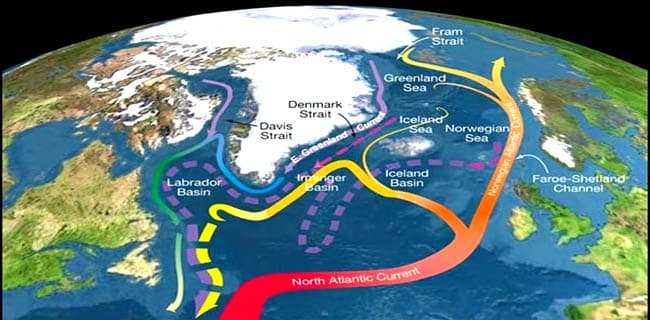
A slowdown or collapse of currents in the North Atlantic would have dire implications for large parts of the world
by Eddie Ford
For a while now, there have been alarming media reports about the possible breakdown of the Atlantic Meridional Overturning Circulation (AMOC) — a vast system of ocean currents that is a key component in global climate regulation, of which the Gulf Stream is a part.
Most people brought up in Britain know all about the Gulf Stream, as they were probably taught it at school like this writer. This is what keeps Britain with a mild climate: stopping us from freezing in winter and making things somewhat cooler during the summer. Essentially, AMOC is a vast marine conveyer belt, where one current gets buried under the other, as it carries heat, carbon and nutrients from the tropics towards the Arctic Circle, where they cool and sink into the deep ocean. This constant churning helps to distribute energy around the planet and modulates the impact of human-caused global warming.
But what has been going on for about the last 100 years, certainly from the 1950s, is Arctic melting, which is releasing non-salt and colder water into the Atlantic and changing the density of surface waters. For example, analysis of satellite records has shown that over the past three decades an estimated 11,000 square miles of Greenland’s ice sheet and glaciers have melted — an area equivalent to the size of Albania and amounting to 1.6% of its total ice cover. As ice has retreated, the amount of land with vegetation growing on it has increased by 33,774 square miles — amounting to a near quadrupling of wetlands across Greenland, which, of course, are a source of methane emissions. As a consequence of such climate behavior, AMOC has declined 15% over this time period and is in its weakest state in more than a millennium — which could prove particularly disastrous for marine life and the communities that depend on it.
Hence we have had a new report from the University of Utrecht published in the Science Advances journal that says we stand on the cusp of a dangerous slowing down of AMOC — not a “collapse” as talked about in some media reports, which is sloppy talk. But it is what you will read in a lot of headlines, especially in sensationalist tabloids like the Daily Mail, often accompanied by images from the 2004 Hollywood blockbuster, The day after tomorrow, that depicts a catastrophic new ice age following the disruption of AMOC, with New York freezing over in a mere weekend or so.
Tipping point
No, that is not what will happen. But what the Utrecht study says is that there is a distinct possibility of slowdown sometime between 2025 to 2095. That is, this century and would represent a climate tipping point.
Of course, any Marxist worth their salt knows all about tipping points — the change from quantity to quality. That is something now accepted in all sorts of different fields, but it used to be a big controversy in biology, and also — for that matter — in climate science until relatively recently. In this context, it is worth reading the last chapter of Charles Darwin’s On the Origin of Species, where he warns his readers against this ‘leap’ question, because this is Marxism — even if he does not explicitly say that. But he thinks that with a leap comes social revolution and Darwin, being a committed liberal reformist, did not want a repeat of Chartism. This attitude is adopted by bourgeois science, to use shorthand, when it comes to the climate question.
However, anti-leap prejudice has been overthrown and increasingly scientists have come around to the view that the climate does develop qualitatively — it does go through leaps, shifting from one pattern to another. It can shift from AMOC, almost overnight into another system. No-one knows exactly what the system will be like, but they are saying that Britain, for example, would get a lot colder and wetter. Naturally, some climate sceptics think they are on to something by pointing out that Britain getting colder in the midst of global warming is a paradox. Yes, they are right, but it is not as simple as saying global warming means the temperature will increase everywhere. Rather, we are talking about complex and chaotic climate patterns, and therefore a change in weather patterns.
Breaking new ground, the Utrecht papers makes various predictions by looking for warning signs in the salinity levels in the southern Atlantic Ocean between Cape Town and Buenos Aires — using a computer simulation of changes over a period of 2,000 years. Of course, some scientists dispute the findings and the various theoretical models, which is the very nature of science — the open contestation of different and contrasting views. The UK Met Office, for instance, believes that large, rapid changes in AMOC are “very unlikely” in the 21st century.
Sea levels
Anyway, the study mapped out some of the consequences of an AMOC slowdown. Sea levels would rise by a meter, inundating many coastal cities like New Orleans, Amsterdam, Bangkok, large parts of London, etc., on a permanent basis. Therefore these cities have to be defended by ever higher barriers or abandoned — like Jakarta (Indonesia is building a new capital city more than 1,000 kilometers away). The wet and dry seasons in the Amazon would flip, potentially pushing the already weakened rainforest past its own tipping point — the jungles turning to something more like the Serengeti in Africa. Temperatures around the world would fluctuate far more erratically. The southern hemisphere would become warmer, whilst Europe would cool dramatically, with a country like Britain becoming a rather unpleasant place to live.
Yes, true, AMOC has collapsed and restarted repeatedly in the cycle of ice ages that occurred from 115,000 to 12,000 years ago. But, according to the Utrecht paper in Science Advances, AMOC is on track towards another major shift — this time largely human created. The precise point is that this shift would not occur over a protracted period between 2025 and 2095, perhaps giving us time to adapt, but would happen quickly at some point in this time band — an abrupt qualitative shift with dire implications for large parts of the world. And, when it happens, the changes will be irreversible on any reasonable human timescale.
In other words, the Utrecht scientists and others are saying we do not know when this will happen, but, if something urgent is not done right now about reversing CO2 and other emissions, this is the sort of thing that can happen — the total degradation, if not destruction, of existing agricultural and habitat patterns. All this at a time when the European Union’s Copernicus climate change service, along with others, showed that for the first time global warming has exceeded 1.5°C for an entire year. Of course, the Paris agreement was not about one year over 1.5°C, but an established pattern over many years. But we have breached that ‘target’ now and if we carry on in that direction, this is what will happen — runaway global warming, more extreme weather, a weakened AMOC, untold millions on the move, and so on.
The world’s sea surface is also at its highest ever recorded average temperature, another ominous sign of climate crisis — especially worrying, given that ocean temperatures do not normally peak for another month or so.
Ruling class
Clearly, the solution has to lie outside capitalism. But, having said that, we have to point out that the ruling class, or at least sections of it, know this — something has to be done; business as usual is not an option. It is hard to believe that they are all stupid or criminally self-interested.
Yet that does not mean proletarian socialism, of course, which is the most democratic and logical thing to do — you actually have to overcome the profit drive, production for the sake of production. But tragically the working class at present is hardly organized on an international basis: it has not readied itself to become the ruling class.
Therefore expect sections of the ruling class to act — maybe the army or the secret state — to impose radical and draconian measures to avert the crisis. Far from it being a humane outcome, expect the opposite, some sort of horrendous outcome, a form of climate socialism — communists use the term in the same way that the German high command in World War I talked about war socialism (Kriegssozialismus).
That was not heaven — it was hell for the working class. This is a danger that we should be acutely aware of. The big problem with protest politics by groups like Just Stop Oil and Insulate Britain is that they could be easily recruited to such a project — such a regime would be attractive to celebrities, the rich and powerful, demagogues, chancers, etc. Sections of the capitalist class would resist, naturally, but others would welcome it on the grounds that it is either climate socialism or social breakdown.
Admittedly, talking about the possible far-sighted nature of some sections of the ruling class might sound a bit fanciful, when you have the drive by Rishi Sunak to ‘max out’ the extraction of North Sea oil and gas. Then we have the Labour Party abandoning its pathetic £28 billion-a-year green package of investment. Pathetic — because it goes along with the idea that you can be both ‘green’ and pro-business, since there is lots of money to be made with electric cars, solar panels, battery technology and suchlike. True, but this is a perverse argument, as capitalism is inherently anti-ecological. Indeed, you could not devise a more anti-ecological system, even if you wanted to. As for things like electric cars, the idea that they are ‘green’ is absurd — how do you think they are made?
So, while Labour says it is still committed to the same green aims and aspirations, do not believe a word of it — such aims and aspirations would mean breaking with capitalism. Indeed, everything at the moment is pointing to the likelihood that we will burst through 1.5°C and beyond on a permanent basis. Where we end up is impossible to predict, but the crucial point is that the global climate is like the proverbial oil tanker — it takes a long time to turn around.
The ice in the Arctic and Antarctica will continue to melt for at least the next 100 years, even if we were to magically have immediate zero net CO2 emissions on the planet — adding to the momentum of increasing temperatures in an appalling negative feedback loop.
https://climateandcapitalism.com/2024/0 ... ate-shift/






